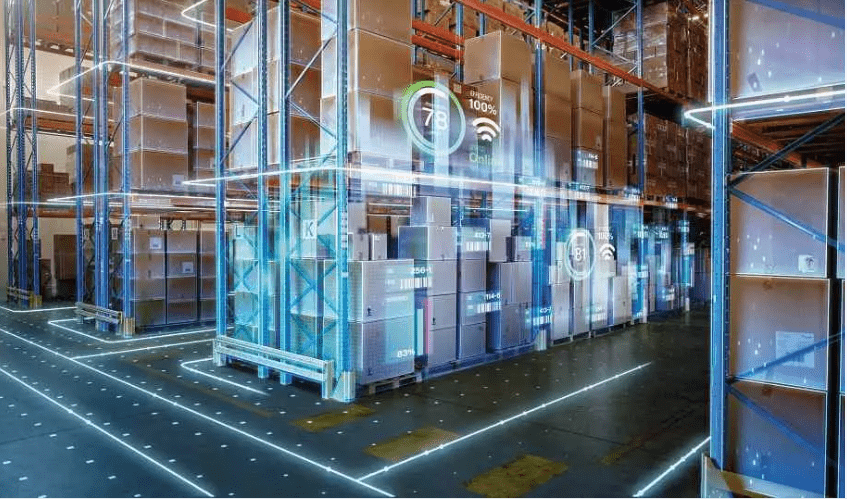If you’ve followed the developments that have taken place in the warehousing and logistics sector in recent years, you’ll have noticed that the pace of innovation has been very fast. New technology is developing at a rapid pace and warehouses are becoming increasingly automated. In many ways, the warehouse of the future is already here, while work continues to make the world of warehousing and logistics more innovative, more efficient and even better equipped to meet the challenges of tomorrow.
What new legislation, technologies and trends will impact the future of warehousing by 2050? How will these innovations affect your competitiveness and your current processes? In this article, you’ll get a range of predictions.
The future of warehousing in the context of urbanisation
The first challenge logistics companies will face in the coming years is to achieve zero net loss of land. EU climate legislation prevents new areas from being built on, regardless of the type of activity planned.
In Denmark, there is also a focus on the challenge of degradation of agricultural land, and there are rules and legislation to manage the use of land resources. Denmark does not have a specific “land law” as in Norway, but there are laws and regulations within the Planning Act, the Nature Conservation Act and other relevant laws that regulate the use of land and protect agricultural land from, for example, urban development.
There is also a focus on preserving agricultural land and managing urban development sustainably. You can find more information on the topic by researching the Danish laws and regulations on land use and agricultural land protection here.

Towards more digitalisation in the warehouse
Digital logistics innovations, which are already underway in many warehouses, have a number of benefits. Digitalisation can help with complex logistics operations and management, reduce human error, increase productivity for logistics teams and make the supply chain more scalable.
To achieve such gains, several technologies are making their way into the warehouse of the future:
- Robots, which can be integrated into all stages of the supply chain: during replenishment, during order preparation and all the way through to dispatching goods.
- Mechanisation, which supports logistics operators in warehouse management and picking and enables greater traceability of products in the warehouse.
- Internet of Things (IoT), which allows warehouse data to be collected and utilised in software solutions to help people work better and more efficiently. Several of these logistics innovations are already well established and utilised in innovative warehouses.
At RAJA’s distribution centre outside Paris, several digital innovations have been implemented. Read more about this here.
Environment and logistics: a greener future
Logistics innovations often also aim to achieve environmental benefits. In the future, companies will have to think more and more about their logistics and supply chain strategy in terms of environmental responsibility.
Legislation is already demanding and will become increasingly stringent, while consumer expectations in this area will follow the same trend. The focus on environmental responsibility will affect numerous aspects of daily logistics management, in particular:
- The design of warehouses, which will have to comply with increasingly advanced environmental standards, especially in the areas of energy saving and sustainability.
- Order preparation and packaging, which already has and will increasingly influence the environmentally responsible customer experience your customers expect. Here, the use of packaging is an important factor, and to maximise your environmental responsibility, you should understand which eco-friendly packaging solutions are best suited to your products.
A small selection of RAJA’s eco-friendly products – you can find more here.



What role will people play in the future of warehousing and logistics?
The logistics sector has been facing recruitment issues for years. Warehouse jobs are often seen as unattractive and have a bad reputation because they are perceived as demanding and physically heavy.
In light of this, and with the rise of robotisation, mechanisation and automation, it’s natural to ask what role humans will have in the warehouse of the future. Will we see a drastic reduction in the number of people working in warehouses and will humans be replaced by technology?
Our prediction is that the warehouse of the future will have fewer employees, but there will always be a need for people. It’s becoming increasingly important for logistics employers to make the warehouse an attractive place to work. This can be achieved by upgrading the skills of operators in light of logistics innovations and by offering good and safe working conditions.














